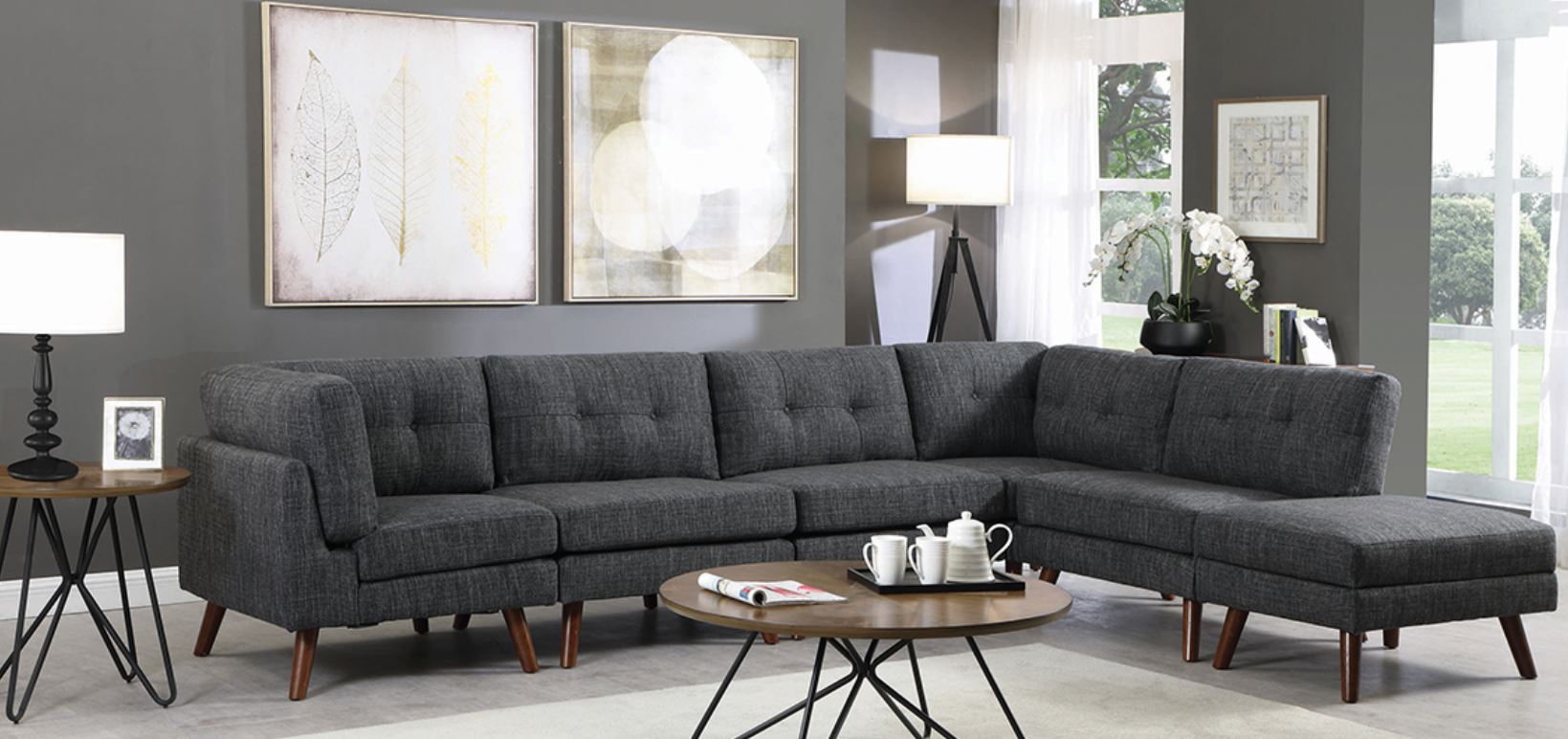At a Gance
How to Clean Upholstered Furniture
How to Clean Acrylic Furniture
How to Clean Leather Furniture
How to Clean Outdoor Furniture
Over time, our home furniture develops sentimental value, as it constitutes the backdrop of many of our fondest memories. In some cases, our furniture literally supports us, compelling us to become wedded to the level of comfort and reliability it offers us.
But as our furniture pieces approach heirloom status, they also suffer the side effects of constant use: faded patterns, scuffed-up wood frames, torn upholstery, and scratched glass. It is therefore essential that we do our part in preserving our furniture—no matter how old or new it is.
So, to keep your beloved pieces looking their best, learn how to clean furniture made from various materials with the help of our guide! Check out the following guidelines, including recipes for DIY cleaners, cleaning instructions, and tips for prolonging your furniture’s lifespan.
How to Clean Upholstered Furniture
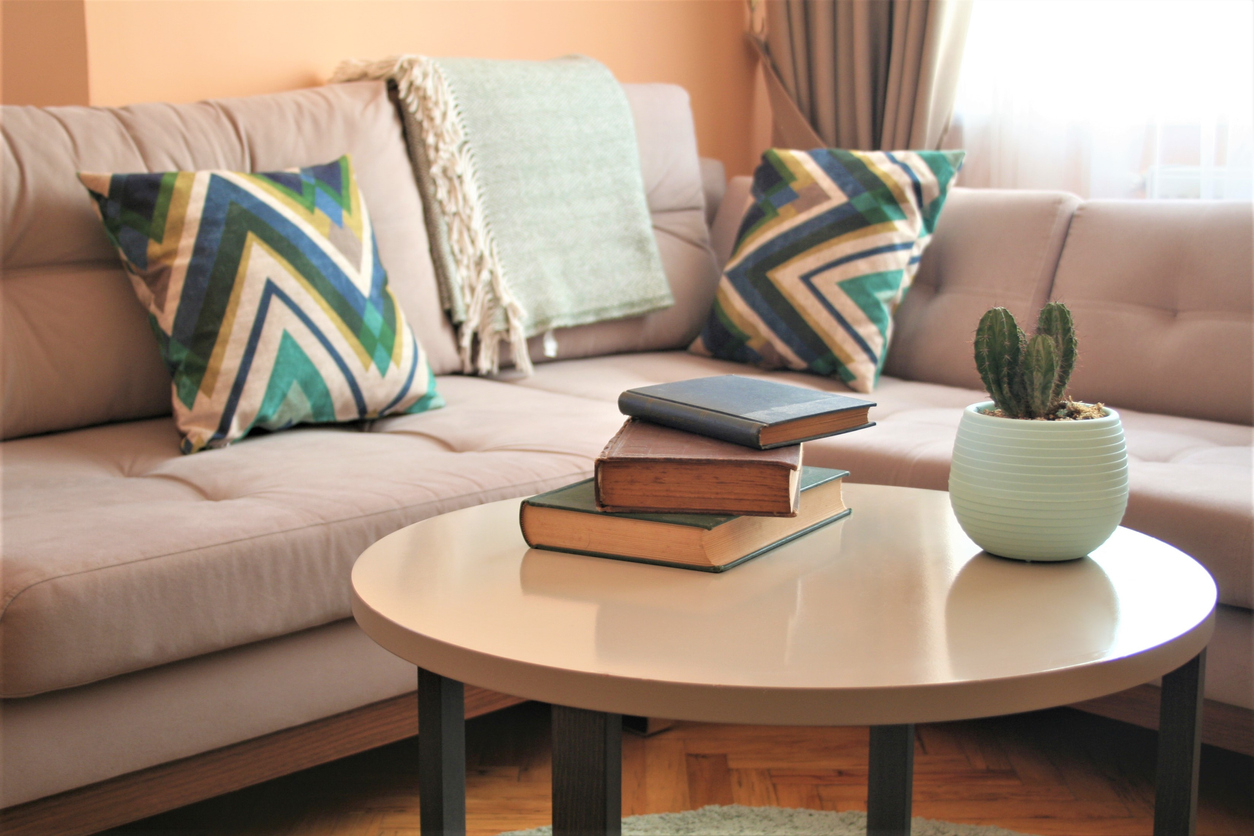
A prime napping spot, part-time playground, and well-traversed dining setting, your sofa is one of those versatile furniture pieces that get a lot of use (and, sometimes, abuse). Accordingly, upholstered furniture requires more upkeep to purge fabric fibers of stains, pet hair, bacteria, dust mites, and, potentially, fungi.
Because of our frequent use, it is recommended that you clean your upholstered seating—also including accent chairs, loveseats, and dining chairs—once a week.
What You’ll Need to Clean Upholstery:
✓ A vacuum cleaner
✓ Liquid dish soap
✓ Warm water
✓ A microfiber cloth
Thankfully, a deep furniture cleaning requires only three steps:
Step 1: Vacuum your upholstered furniture.
Use a vacuum attachment, such as an upholstery tool, an extension wand, or a crevice tool, to capture dust and allergens as you run the vacuum hose all over your upholstery.
Step 2: Remove stains and odors.
First, blot any moistened spots with a paper towel. For dried solids, use a soft-bristled brush to gently scrape off the debris. At this point, check the manufacturer care instructions on one of the tags to determine if the upholstery can be cleaned with a water-based cleaner.
What Does This Cleaning Code Mean?
Here are a few common cleaning codes and what they mean:
- Code W: Water-based cleaning solvents are acceptable to remove stains.
- Code S: Dry cleaning only. A water-free cleaning solvent is acceptable to remove stains.
- Code S-W: Water-based or water-free cleaning solvents are both acceptable to remove stains.
- Code X: Do not use a cleaning solvent of any kind to remove stains. To avoid fabric damage and shrinkage when cleaning, use a vacuum or seek professional service.
If the tag shows a “W” or “S-W,” create a solution of ¼-cup of liquid dish soap and one cup of warm water, whisking it until it’s sudsy.
Next, dip a sponge to treat any set-in stains or areas that have an unpleasant smell. Finish this step by dipping a clean microfiber cloth in clear water to blot away any remaining suds. This will prevent your upholstery from attracting soil after cleaning.
Note: As an alternative measure, you may choose to invest in a handheld carpet cleaner that uses a cleaning formula to remove stains and odors. If you have the means to perform this option, be sure to use the product as directed.
Step 3: Deep clean your upholstery.
For an overall cleaning, you’ll need a less concentrated solution of liquid dish soap and warm water. This time, mix only one teaspoon of the soap with one gallon of warm water; do not create suds by whisking it.
Next, dip a sponge or microfiber cloth in the soapy solution, wring it until it’s just damp, and wipe down the entire upholstery while avoiding any metal hardware (to curb the development of rust). Then, rinse with a separate sponge or microfiber cloth dampened with clear water.
Finally, blot your upholstery with a dry cloth to absorb moisture. To assist the drying process, you may use a circulating fan, but remember to avoid direct heat to prevent color fading.
How to Clean a Couch
We’ve gone over how to clean upholstery in the previous section. Now, we’ll discuss how to clean a couch or sofa, with extra tips for how to prevent stains!
What You’ll Need to Clean a Sofa
✓ A vacuum cleaner
✓ A soft brush attachment for the vacuum cleaner
✓ A piece of furniture polish or wax
✓ A dry cloth
✓ An upholstery brush (or a toothbrush)
✓ Cleaning detergent (if necessary)
Step 1: Use Your Vacuum cleaner
You should start by vacuuming the couch. Use the vacuum cleaner with a soft brush attachment to remove any dust, dirt, or crumbs from the surface of the couch.
Step 2: Apply Cleaning Solution with Upholstery Brush
Use a cleaning detergent (if necessary). If the couch is stained, you may need to use a cleaning detergent. Make sure to read the manufacturer's instructions carefully before using any detergents or solutions, as some fabrics may be damaged by certain products.
Brush the couch with an upholstery brush (or a toothbrush). Using an upholstery brush (or a toothbrush), gently brush the fabric in a circular motion. This will help to loosen any dirt or stains that are embedded in the fabric.
Step 3: Vacuum Again and Apply Stain Repellent
Vacuum the couch again. Once you have brushed the couch, vacuum it again to remove any loose dirt or debris.
Apply a stain repellent (optional). If you want, you can apply a stain repellent to the couch after it is clean. This will help to protect the fabric from future stains.
Enjoy your clean couch!
Pro Tip: Apply furniture polish or wax. Using a dry cloth, apply a thin layer of furniture polish or wax to the entire surface of the couch. This will help to protect the fabric from dirt and stains.
How to Clean Wood Furniture
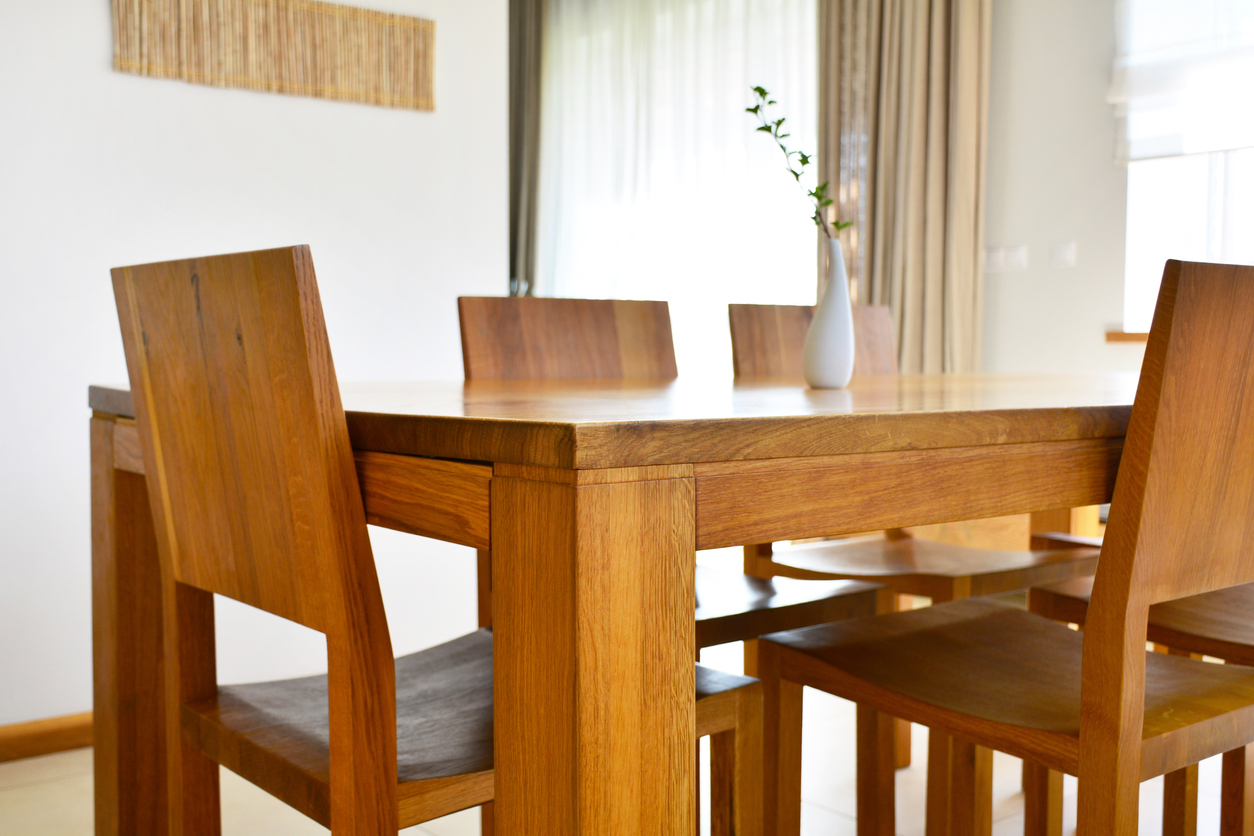
Whether it dons your dining table or bedroom dresser, wood mimics the multisensory experience of being in nature, satisfying the human need to connect with the great outdoors—and we should just as dearly regard its upkeep.
What You’ll Need to Clean Wooden Furniture:
✓ A soft cloth
✓ Liquid dish soap
✓ Warm water
✓ Wax polish (optional
Along with remembering to use placemats, coasters, doilies, and other protective furnishings, be sure to dust and clean your wood furniture once a week and to polish it every two months. Not just for tables and storage furniture, our cleaning guidelines also apply to wood frames, such as those in some upholstered chairs. With that said, our recommended instructions are as follows:
Step 1: Clean with liquid dish soap and water.
First, be sure to dust your furniture with a soft, lint-free cloth.
Next, test an inconspicuous part of the furniture to ensure this cleaning regimen does not damage the wood. To do this, add a drop of liquid dish soap to a water-moistened cotton ball, and wipe the cotton ball over this hidden area. If the test shows no evidence of damage, you can safely proceed. If there are is marring on the test area, continue the process without the soap.
As applicable, mix one teaspoon of liquid dish soap in a medium bowl of warm water. Dip a sponge in the solution, wring it until it’s just damp, and gently swipe the furniture without soaking the wood. Immediately dry the piece of furniture thoroughly with a dry microfiber cloth.
Step 2: Consider refinishing.
As an optional measure, you may consider refinishing your wood furniture, especially if there are dents, blemishes, water spots (including rings), sticky surfaces, and other imperfections.
Check out this resource for step-by-step instructions and pro tips for refinishing wood furniture.
Step 3: Apply furniture wax polish.
For optimal furniture maintenance, it is important to apply furniture wax to prevent future damage. Reach for a furniture wax product, and with a cheesecloth, apply the wax liberally while rubbing in the direction of the wood grain. Then, buff the furniture dry with a clean microfiber cloth.
How to Clean Acrylic Furniture
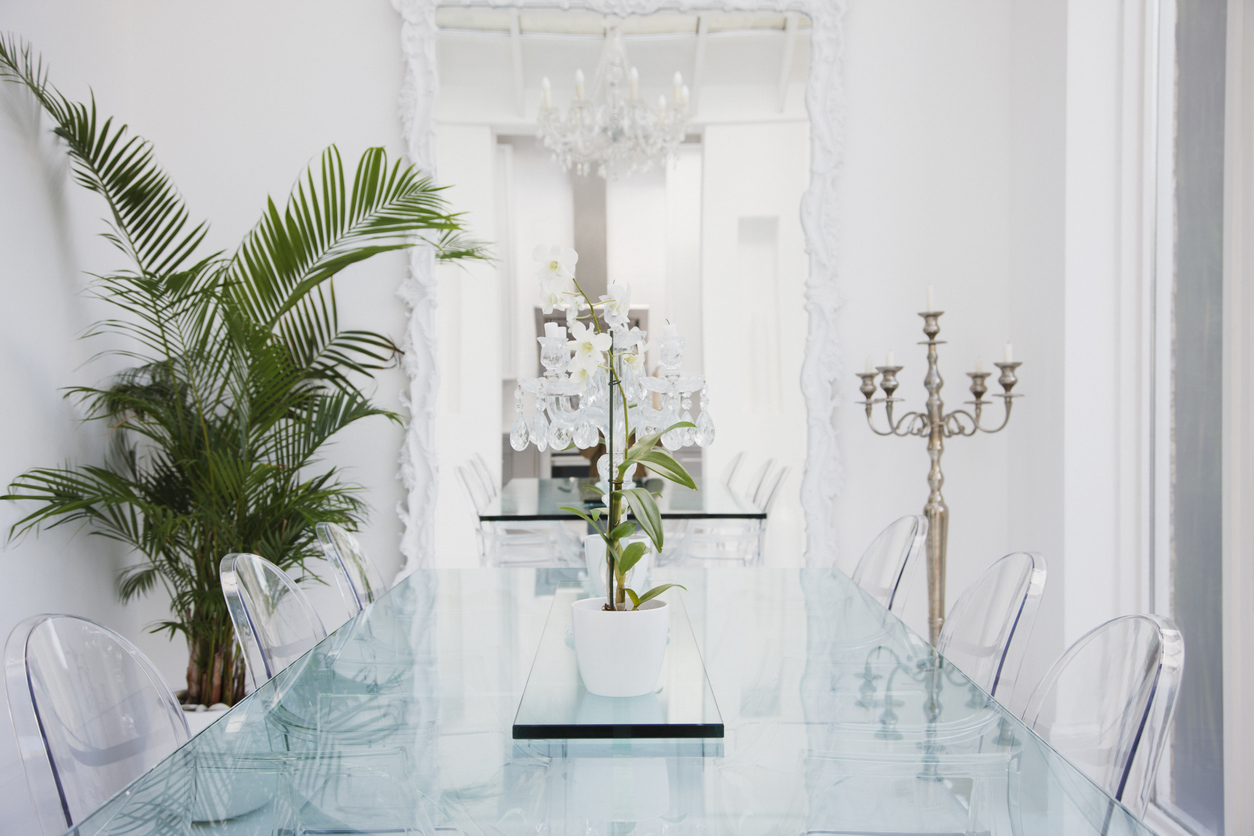
Acrylic furniture pieces (namely dining chairs and accent tables) have risen in popularity recently, adorning lofts and eclectically styled home interiors. While their ghost-like presence makes them ideal for furnishing small living spaces, maintenance can be a challenge since their clear surfaces don’t hide smudges and scratches well—if at all.
What You’ll Need to Clean Acrylic or Plastic Furniture:
✓ Specially formulated acrylic cleaning product
✓ A microfiber cloth
✓ Plastic polishing kit (optional)
The best way to clean furniture made from plastic materials is to simply be gentle with them. Most importantly, avoid contact with sharp or abrasive objects. And if your acrylic piece is a table, be sure to use adhering felt pads when placing down a metal or hard-edged object.
To further circumvent damage to this material, be sure to take heed to these cleaning instructions:
Step 1: Lightly dust your acrylic furniture.
Use a clean microfiber cloth to gently wipe away any dust or debris.
Step 2: Use a specialized cleaning solution.
Off the bat, beware of any cleaners with ammonia—this chemical compound causes irreversible damage to acrylic, giving it a perpetually cloudy look. Many household cleaners like Windex, 409, and Fantastik contain ammonia, and as such, should be avoided when cleaning your acrylic furniture.
Instead, be on the lookout for a cleaning product made for acrylic or plastic. You can work in the product in sections; apply a small amount of this type of cleaner directly on your furniture and then use a separate microfiber cloth to gently polish the acrylic. Once the small area is buffed dry, repeat the process until the entire piece has been wiped clean.
Step 3: Use a plastic polish to remove any scratches.
For optimal care, invest in a plastic polish kit to remove minor scratches; use as directed. For major scratches, we recommend enlisting the help of a professional to buff the surface.
How to Clean Leather Furniture

If you have a leather couch or recliner, then you know how easy it is for creases and stains to set in this material. To maintain your leather’s supple feel and stately appearance, it’s important to keep it positioned away from direct sunlight and to clean it once a week.
What You’ll Need to Clean Leather Furniture:
✓ A vacuum cleaner
✓ A microfiber cloth
✓ Distilled white vinegar
✓ Sponge
✓ Baking soda (optional
Along with the predictable advice of “keep your shoes off the sofa,” here are three simple steps you can take to ensure your leather furniture looks as new as the day you bought it:
Step 1: Vacuum your leather furniture.
Use a vacuum attachment to capture dust and allergens as you run the vacuum hose all over your upholstery. To perform furniture detailing, be sure to use a crevice tool to lift any debris from between the cushions and any seamed borders.
As an extra measure, you may wipe down your leather furniture with a clean microfiber cloth.
Step 2: Remove stains with diluted vinegar.
Next, inspect your furniture for any set-in stains. To treat these problem areas, create a half-and-half solution of distilled white vinegar and room-temperature water. Dampen a corner of a microfiber cloth and test an inconspicuous area first; if there is no damage, proceed, but if there is, forgo this spot treatment and enlist the help of a professional.
As applicable, wipe down any stains with the diluted vinegar while rinsing the cloth after every few strokes (to avoid spreading any dirt). Be careful to not soak the material, as saturation is one of leather’s greatest nemeses.
Afterward, dry the treated areas with a clean microfiber cloth.
Notes: For grease stains, avoid applying water, as it might worsen the stain. Instead, sprinkle baking soda over the affected area, letting it sit for at least three hours. After that, brush the baking soda off with a clean microfiber cloth.
Step 3: Wipe down the leather with a damp sponge.
Lastly, fill a medium bowl with warm water. Dip a sponge in the bath, wring it until it’s just damp, and lightly swipe the furniture without soaking the leather.
Buff the furniture dry with a clean microfiber cloth.
How to Clean Outdoor Furniture
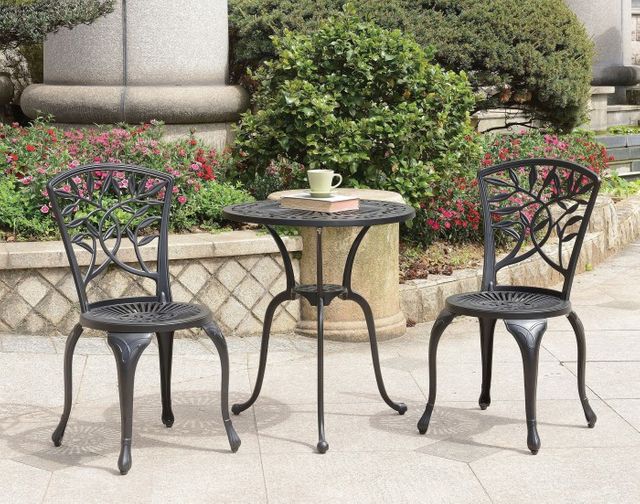
Cleaning outdoor furniture can be a daunting task, but it's important to do in order to keep it looking good.
What You’ll Need to Clean Outdoor Patio Furniture:
✓ Vinegar
✓ Liquid dish soap
✓ Glass cleaner
✓ A microfiber cloth
✓ Sponge
✓ Paintbrush
✓ Sanding sheet
Here are some tips on how to clean different types of outdoor furniture:
How to Clean Aluminum Outdoor Furniture
You should wash aluminum furniture frequently. At the first signs of rust, lightly sand it off. For aluminum furniture, you should remove as much grime as possible by using a solution of equal parts white vinegar and water. When you are cleaning aluminum furniture, you should avoid certain chemicals like alkaline cleaners and ammonia. These can cause oxidation, thus, ruining your furniture.
How to Clean Glass Outdoor Furniture
For glass furniture, use a non-abrasive cloth to wipe down any excess debris. Then use a home cleaning solution or dish detergent to remove the remaining filth. Once you've scrubbed away the dirt and grime, use a glass cleaner or vinegar to leave your glass furniture sparkling.
How to Clean Wicker Furniture
It is recommended that you clean wicker furniture four times a year. Before cleaning, remove any cushions. These should be cleaned separately. The best way to clean patio cushions is to refer to the manufacturer's instructions. Once your furniture is clean, dust it using a microfiber duster or even a paintbrush. Now you are ready to clean. Combine a 1/4 cup of liquid dish soap and 2 cups of water. Mix to make a nice, sudsy solution. Now, using a sponge, carefully wipe down your furniture. If you need to remove mildew or mold, add some vinegar to your soap mixture. Once you are done, rinse the soap away with a hose or a bucket.
Why Trust Colder’s?
Since 1942, we at Colder's pride ourselves on offering value, selection, and service. Serving Southeastern Wisconsin with four showrooms that stock quality name-brand furniture, appliances, and mattresses, Colder’s is sure to house exactly what you are looking for. And if you can't find it on our floors, chances are, we can order it for you. As a local, family-owned company, we are always doing our best to provide the highest value at the lowest cost to everyone who walks through our doors.
Colder’s is committed not only to continuously offering can’t-miss sales but also to working with each customer, making sure that you take advantage of every possible markdown — that’s our best price guarantee.
Shop Home Furniture at Colder’s
Don’t put off happiness — and shop furniture online for unbeatable prices at Colder’s. Our friendly experts are always happy to help you with how to clean furniture, whether you call us at 414-476-1574 or use our online chat feature. Better yet, stop by one our Colder’s locations in West Allis, Oak Creek, Delafield, and Grafton, Wisconsin to touch, see, feel, and experience home products that fulfill your dreams. Visit us today!
Learn More: How to Best Take Care of Your Mattress
